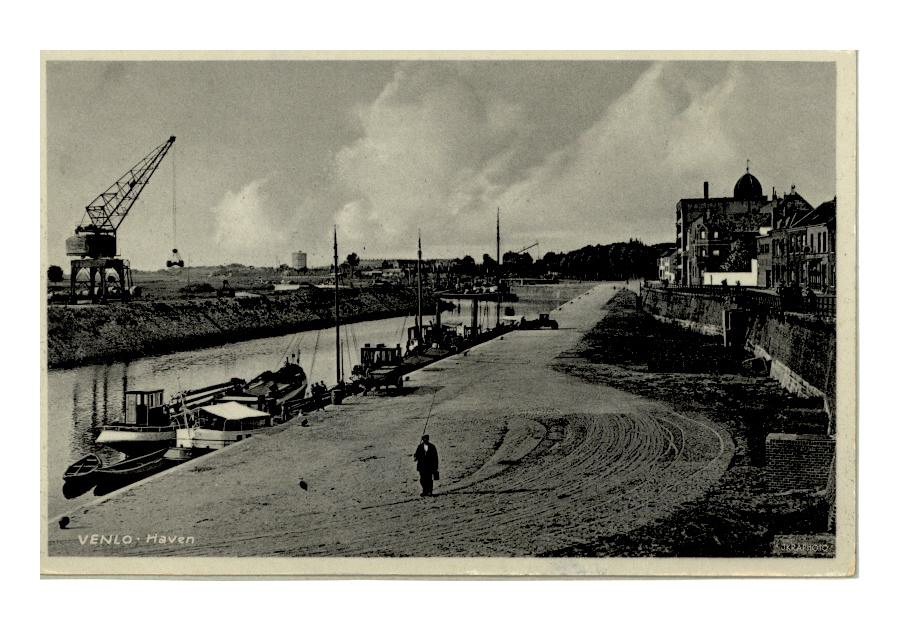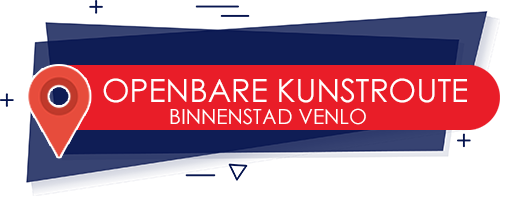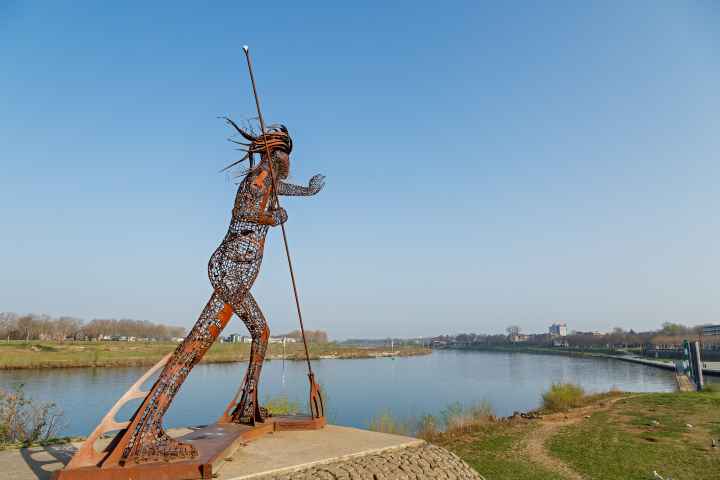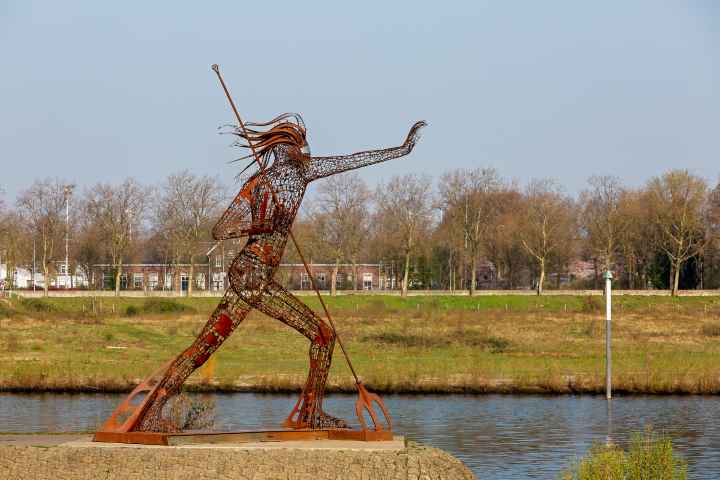The Peaceful Warrior
Maasboulevard/Kop van de Weerd
The Peaceful Warrior – Rik van Rijswick
The Peaceful Warrior has a remarkable spot at the end of the Kop van de Weerd peninsula. His posture is clear: he stands with a raised hand, seeming to give a stop sign. That is exactly the message that artist Rik van Rijswick wants to convey with this work: ‘Stop! Stop! Up to here and no further. The world has to change. According to his maker, the warrior stands for something bigger and broader than just money, power and status. Letting go of old systems and ways of thinking and bringing out the good in people. The Warrior stands for setting boundaries and taking rest.
The work of art was returned to its previous location in December 2018. Because the artist and the municipality of Venlo could not agree on the finances, De Krijger was removed in 2015. This to the disappointment of a large part of the Venlo population. It is thanks to the efforts of Venloosch Vastelaoves Gezelschap Jocus that the work of art eventually returned. The Vastelaoves Gezelschap celebrated its 176th anniversary in 2018 (16×11) and saw the return of the Peaceful Warrior as a birthday gift to the people of Venlo.
The artist: Rik van Rijswick
After completing his secondary school education, Rik van Rijswick (Tegelen, 4 March 1972) studied at the Graphic School in Eindhoven and the Fontys Institute for Product Design, before working as a freelance artist. De Krijger is not his only large-scale work of art that can be found in the city-centre of Venlo. On the museum square at Keulsepoort, there is D’n Haan, his version of Jocus Haan, the symbol of Venlo Vastelaoves Gezelschap Jocus. In Beesel, a roundabout features De Draak, a reference to the Dragon Games that are held in this village once every seven years.
For a long time, Van Rijswick only made ‘free work’ such as a series of Guardians or Watchmen. Until one day he ’emptied his soul’ and began to work on commission. He always looks for the common ground so that both artist and client are satisfied with the creative process and the final result.
Head of the Weerd
Once upon a time, in the Middle Ages, De Weerd was an island in the Maas river near Venlo. It was close to the spot where ships loaded and unloaded their goods. In the 18th century, the island was connected to the Maas river. This was done by raising lower spots in the Maas with rubble. This created Bastion Le Roy, which became part of the city’s fortifications. In the 19th and 20th centuries, the area what was now called Kop van de Weerd was part of Venlo’s harbour. The working-class neighbourhood ‘t Hetje, where many people who worked in the harbour lived, was part of this harbour. Up until after the Second World War, the Venlo harbour area was full of life, but when the first industrial estates were relocated outside the city in the 1960s, the activities in the old harbour were stopped. The Kop van de Weerd became a car park from the 1970s onwards, and the harbour area deteriorated. The construction of the shopping and recreational area Maasboulevard changed all that. The Kop van de Weerd was transformed into a city park with a view of the marina in Venlo’s city centre.

The harbour with the Kop van de Weerd on the left. In the centre in the background the Gas Holder (Gaaskaetel) and on the right the envelope factory of Wed. Bontamps on the Oude Markt. (Photo: Venlo municipal archive)





